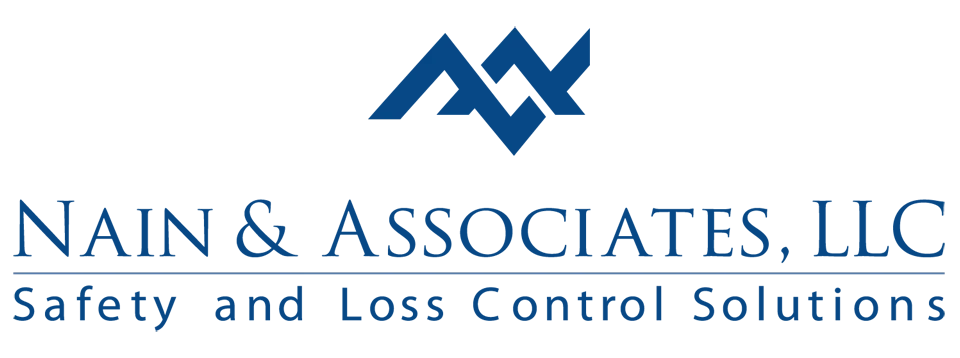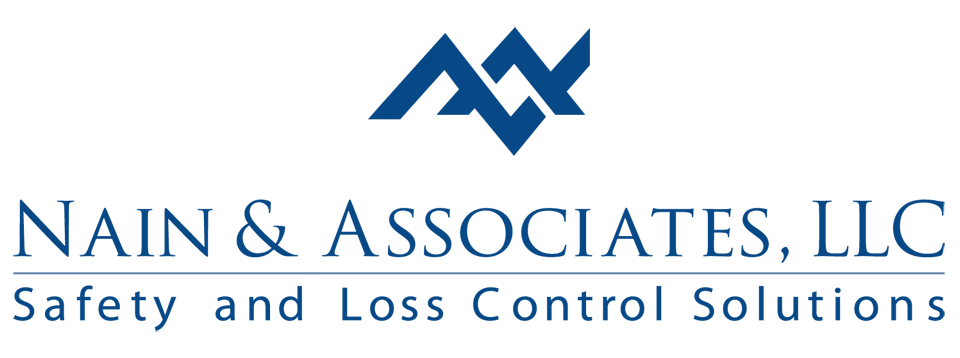

(828) 471-4317
Now Offering Spanish Safety Training!

Now Offering Spanish Safety Training!
Top 10 OSHA Violations (Latest List): What They Mean for Your Training & Audits
Avoiding Common Violations
The Latest Top 10 OSHA Violations—and Why It Matters

OSHA’s latest Top 10 most-cited standards confirm where programs most often break down. The current list features Fall Protection (general requirements), Hazard Communication, Ladders, Respiratory Protection, Lockout/Tagout, Powered Industrial Trucks, Fall Protection—Training, Scaffolding, Eye and Face Protection, and Machine Guarding for fiscal year 2024.
Why it matters: these categories drive a high portion of serious injuries, repeat citations, and costly project delays. Using the list as a heat map, safety leaders can focus training refreshers, mock inspections, and corrective action budgets where risk and enforcement pressure are both consistently high.
Use the Top 10 to set quarterly priorities. Align toolbox talks, supervisor coaching, and field audits to the themes. Pre-work checklists, competent-person verifications, and photos of controls build proof. When trends improve, rotate emphasis and keep monitoring so gains hold through busy seasons and turnover.

What the List Means for Your Training Program
Falls dominate, so verify fall-protection planning, anchorage selection, and training before work. Inspect guardrails, covers, and personal fall arrest components; tag damaged gear out of service. For ladders and scaffolds, check the right type, set-up, access, and daily tags; require a competent person to inspect and authorize use. Plan prompt rescue for arrest systems, practice ladder setup, and record inspections with dates, names, and corrective actions.
General-industry mainstays demand rigor. In Hazard Communication, update SDS libraries, workplace labels, and training to reflect 2024 revisions. For Respiratory Protection, complete medical evaluations, fit testing, and task-specific training; log seal checks. In Lockout/Tagout, keep task-based procedures with verification steps. For powered industrial trucks, document operator evaluations and supervisor observations. Standardize toolbox talks, bilingual materials, and rosters; coach supervisors to spot misuse, intervene early, and document retraining timelines and robust documentation.
Eye and face protection and machine guarding round out the list. Verify guards are present, secured, and adjusted; prohibit bypasses. Stock task-appropriate PPE and train on selection, care, and replacement. Tie all ten areas to a quarterly audit plan with photos, corrective-action tracking, and trend reviews that drive refresher training. Verify eyewash access, maintain inventories, and include guarding changes in management of change regularly.
Training Moves That Stick

Make training practical and short. Use micro-lessons that mirror how work happens: ladder setup, harness inspection, forklift approach speeds, or changing abrasive wheels. Teach supervisors to run refreshers before critical tasks. Reinforce with bilingual materials and demos so workers remember steps under pressure on shifts.
Anchor classes to the Top 10. For HazCom, show containers and SDS access. For respirators, fit-test and practice donning, doffing, and seal checks. For LOTO, rehearse try-start and bleed-down. For PIT, practice aisle etiquette, dock edges, trailer creep, and spotter protocols with cones and checklists.
Close the loop with daily coaching. Supervisors observe work, correct behaviors in the moment, and record actions taken. Use quizzes, stickered equipment tags, and sign-in rosters to prove participation. Trend unsafe acts, retrain as needed, and celebrate wins so crews view training as practical help.
Make training practical and short. Use micro-lessons that mirror how work happens: ladder setup, harness inspection, forklift approach speeds, or changing abrasive wheels. Teach supervisors to run refreshers before critical tasks. Reinforce with bilingual materials and demos so workers remember steps under pressure on shifts.
Anchor classes to the Top 10. For HazCom, show containers and SDS access. For respirators, fit-test and practice donning, doffing, and seal checks. For LOTO, rehearse try-start and bleed-down. For PIT, practice aisle etiquette, dock edges, trailer creep, and spotter protocols with cones and checklists.
Close the loop with daily coaching.
Close the loop with daily coaching. Supervisors observe work, correct behaviors in the moment, and record actions taken. Use quizzes, stickered equipment tags, and sign-in rosters to prove participation. Trend unsafe acts, retrain as needed, and celebrate wins so crews view training as practical help.

Turn the Top 10 into an audit circuit. Each month, sample items from every category: harness condition and anchor use; ladder selection, angle, and tie-off; forklift pre-use checks and operator evaluation files; respirator fit-test rosters; machine guards present and secure; HazCom labels and SDS access. Photograph good and bad examples, capture corrective actions with owners and dates, and verify completion the following month. Publish trends so crews see progress and leaders can aim resources.
Schedule training in pulses aligned with audit results. If ladders and PIT trend high, run short refreshers, coach in the field, and retest operators or users until performance stabilizes. If HazCom or respirators lag, fix materials, access, and fit-testing logistics first, then retrain. Keep a one-page dashboard showing open actions, due dates, and owners. That transparency builds accountability, supports prequalification reviews, and reduces surprises during inspections or client walkthroughs and audits across sites and shifts.
Audit Playbook: Spot, Prove, Improve
Spot issues fast with a triage matrix tied to the Top 10. Start walkthroughs scanning for fall exposures, ladder misuse, missing guards, and unlabeled chemicals. Use a repeatable route, ask operators to demonstrate pre-use checks, and photograph conditions with date, location, and description. Log attendees, supervisor notified, and immediate controls.
Prove compliance with artifacts. Keep fall-protection equipment inspections, ladder and scaffold tags, forklift evaluation check sheets, and respirator fit-test records current. In HazCom, show updated labels, SDS access, and training rosters. For machine guarding and LOTO, retain photos of guards in place, procedure cards at panels, try-start results, and annual audit forms. Index everything in a shared folder structure so anyone can retrieve proof within minutes during inspections or client audits. Keep calibration records for sampling.
Improve outcomes with disciplined follow-through. Assign owners and due dates, prioritize highest-risk items, and verify completion with photos and signoffs. Use root-cause thinking: fix training, procedures, equipment, or supervision—not just symptoms. Recheck closed items within two weeks to confirm controls stick. Summarize results monthly for leadership, celebrate wins, and resource recurring problems. Over time, the Top 10 turns from a liability list into a roadmap for targeted improvements and fewer citations. Track training matrices.
Documentation That Stands Up
Documentation convinces. Keep written programs aligned to the Top 10: fall protection, LOTO, HazCom, respirators, PIT, machine guarding, and scaffolding. Include roles, training, inspections, and corrective-action steps. Version-control each document, show approvers and dates, and archive superseded copies so you can prove what applied during any inspection.
Records make it real. Maintain training rosters, operator evaluations, fit-tests, ladder and scaffold tags, equipment inspections, and photos showing controls in place. Link artifacts to locations and dates. Store them in a searchable folder structure with standard names so supervisors can find proof quickly under inspection pressure.
Close the loop. Use a corrective-action log with owners, due dates, and evidence fields. Recheck high-risk items, document results, and escalate misses. Monthly summaries show trends, support budgets, and demonstrate continuous improvement—important in conferences, audits, and insurer reviews that follow incidents.

Need a clean starting point? Build a one-page Top 10 checklist and a five-page audit packet with photo prompts. Include sections for fall protection, ladders, scaffolds, PIT, LOTO, HazCom, respirators, guarding, and eye/face protection. Add a corrective-action log and a roster page. Train supervisors to use the packet weekly, attach photos, and file copies centrally. That creates consistent habits and ready evidence without adding bureaucracy to already packed schedules across shifts and sites companywide today.
As results improve, rotate emphasis to stubborn topics. If eye and face protection drops from audits, turn attention to machine guarding or lockout verification. Share before/after photos in brief huddles, recognize crews for clean audits, and post dashboards near time clocks. When incidents occur, use the packet to document immediate controls, root causes, and retraining. That continuity strengthens defenses in inspections and builds credibility with clients, insurers, and employees who expect consistent, practical safety everywhere.
Takeaways and How Nain & Associates Can Help
Takeaways: the Top 10 is a roadmap for training and audits. Translate each category into specific skills, pre-use checks, and documentation habits. Prioritize fall protection, ladders, and scaffolds on jobs; tighten HazCom, respirators, LOTO, PIT, guarding, and eye protection in shops and warehouses. Build short training pulses and audit circuits that generate photos and corrective actions. When measurement improves, rotate focus so effort follows risk.
How Nain & Associates helps: we align your program to the Top 10 with bilingual training, mock OSHA inspections, and documents supervisors can use. We author or refresh written programs, build task-based checklists, and organize proof—rosters, evaluations, fit-tests, tags, and photos—so compliance is visible. We coach supervisors, validate controls, and tune audits to your operations. For multi-site portfolios, we standardize templates and dashboards while respecting site differences and client requirements.
Need momentum? We can embed on-site safety professionals to run observations, clear backlogs, and train champions. Expect concise playbooks and coaching that sticks. We’ll map a roadmap, set owners and dates, and track progress. Call (828) 471-4317 or request services to start. We’ll reduce exposure, prevent citations, and build a trail that stands up during inspections, client prequalification, and insurer reviews across seasons and sites.
Have Questions About What We Offer?
To learn more about our services, contact us today!
Have Questions About What We Offer?
Contact us to learn more about our services

Speak with a
safety Specialist
Workplace Safety Training & Consulting Experts for
Charlotte, Hickory, Asheville, North Carolina and
the Southeast for since 2005!
Design By: Customers.Plus
© 2025 | Nain & Associates LLC


